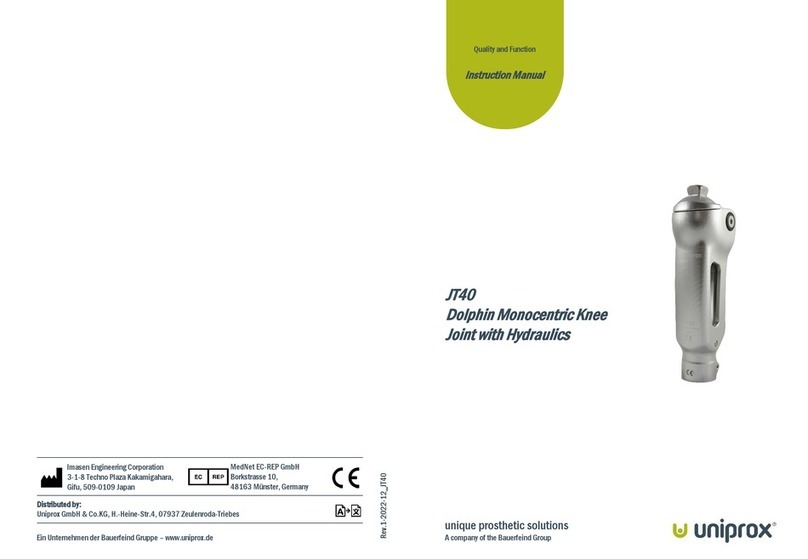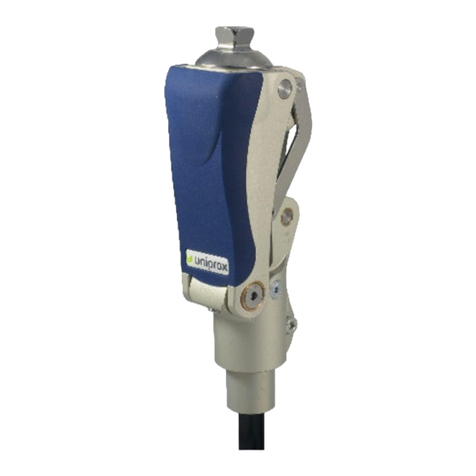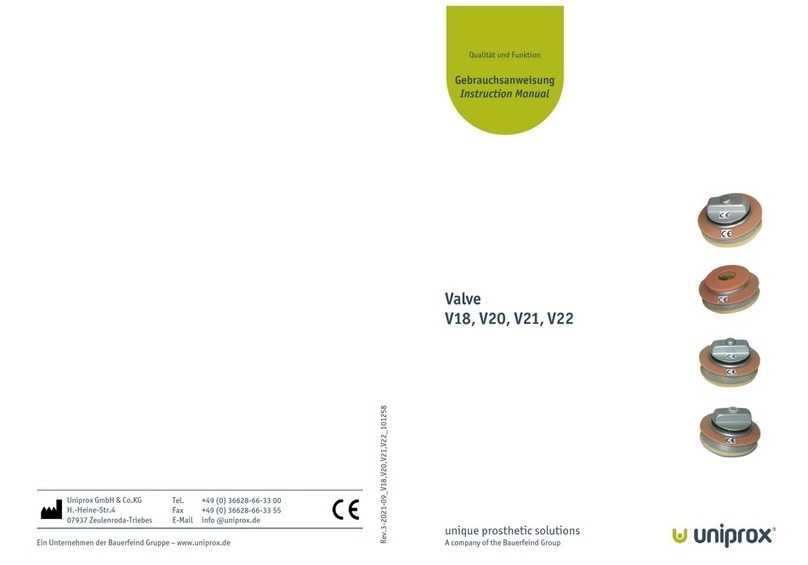
4 7
Reassess knee function during walking and adjust accordingly.
Important: flexion and extension must be possible at all settings!
Resetting Friction to factory setting: Friction adjustment screw should be reset to be
flush with knee frame surface.
7.3 SWING PHASE – Spring Extension Assist
The Knee Spring Extension Adjustment screw is located
Within the tube clamp portion of the knee joint and is
adjusted with with a 5 mm hex wrench :
•Clockwise adjustment = increases extension assist
•Anti Clockwise adjustment =
decreases extesion assist
Important: Knee action should be smooth. This knee is
a low activity knee, so do not expect for very rapid
extension assist to occur. Excessive spring tension could
possibly affect knee friction tension.
7.4 Unlocked Knee Mode –
Manual Lock Disable Procedure
Note: Lock should only be disabled by the prosthetist when patient has been released
to have the ability to control the prosthesis without the need for the manual lock
mechanism!
Manual Lock Disable:
•Push the locking lever (a) upwards and secure in
this position by turning the set screw (b) with a
2 mm hex wrench clockwise. Apply thread locker!
•Lanyard can be removed by removing the retainer
screw with 2.5mm hex wrench.
IMPORTANT: Set screw (b) should be tightened to a torque of 5 Nm and
secured with thread locker when finishing the prosthesis. Do not over
tighten! Use a torque wrench!
- English -
Note: Failure to adequately secure the set screw (b) when disabling the locking lever
(a), can result in loss of function of the knee and / or makes it impossible to move the
knee freely.
Note: If being used with the locking function, the disable set screw (b) must not
impede the function of the locking lever (a) and must be secured with Loctite to rule
out inadvertent loosening and inadvertent function.
7.5 The Lanyard Handle
The Lanyard Handle has the ability to keep the knee in either the temporary unlocked
or locked position.
Setting the Lanyard Handle on the Cable:
Once the retainer screw is mounted with the star nut on
the socket, adjust the cable to the in desired length:
•Set the lanyard length by having knee in locked position
and handle in the locked position.
•Take out unwanted slack in the lanyard cable by pushing
excess length out of the handle, and remove ferrule by
unscrewing but do not remove handle.
•Mark cable as indicated.
•Cut cable at a 45 degree angle as indicated.
•Screw ferrule onto cable.
•Confirm lock function by cycling the lanyard handle to assess that the knee locks,
and unlocks. Adjust length as needed by screwing ferrule more onto the cable and
cut excess.
•If used with the locking function, the locking lever or lanyard cable must not be
impeded by the cosmesis. The cable must run freely.
IMPORTANT! Secure the cable so that it cannot catch in grinding tools
when modifications are required to socket! Hazard potential!
7.6 Attachment of Star Nut
The Star Nut needs to be laminated into the socket. For attachment an M4 thread
should be drilled into the button.
- English -

























